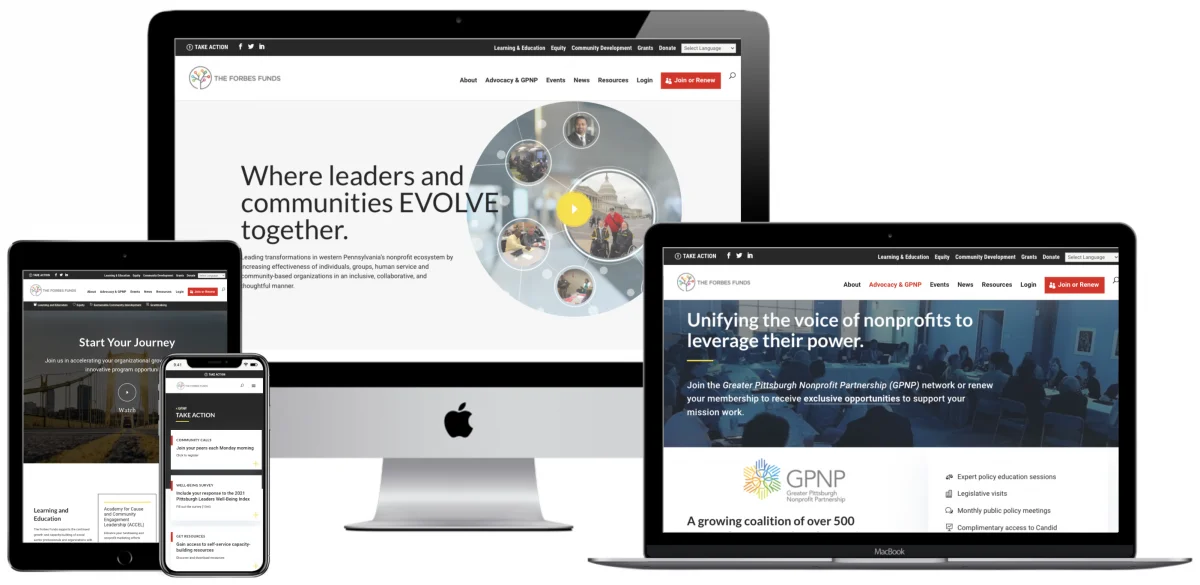Web design has evolved over the years, which is why so many organizations opt for iterative design that’s updated regularly. Even within a year or two, web design trends change and evolve, which means your website can go from sparkling new to out-of-date in a blink.
This unprecedented pace is driven by advancements in technology, the need for user-centric experiences, and the power of data-driven decision-making. As we step into the future, emerging web design trends are shaping the way we interact with websites, and one of the most exciting areas of development is the pursuit of hyper-personalized user experiences. These experiences are powered by a dynamic combination of Artificial Intelligence (AI), creativity, and data. Let’s delve into the key trends that are revolutionizing web design to create highly personalized and engaging online journeys for users.
1) AI-powered user personalization
This Forbes article explains elements of timeless web design, which include minimalism, interactive elements, dynamic content, and intelligent automation.
AI algorithms have grown increasingly sophisticated, allowing web designers to create highly personalized experiences. Sarah Malcom in the Forbes article explains, “Imagine landing on a website and it already knows what you’re looking for—no more searching for hours or inputting the same information repeatedly.”
Through machine learning, websites can analyze user behavior, preferences, and demographics to tailor content, recommendations, and even layouts in real-time. This level of personalization can boost user engagement, conversion rates, and overall satisfaction.
Key Medium wrote about this process in 2019 as Google has actually been doing this for years: check out our piece on Google’s search journeys here. If you use Google, you may notice (if you’re signed in) how it’ll tell you when you last visited a website. Every time you search, Google can predict what it is you’re looking for. Whether, when you type in “pumpkins” you want a recipe, general information, or ideas for pumpkin carving! Maybe a little scary of a concept for some!
Now, this technology – just like AI – is being opened up to the “rest of us” which means your website can do more for customers. Pretty soon, hyper-personalized websites will become commonplace to us – just as faster load times did or high-speed internet after the advent of dial-up.
2) Data-driven design decisions
Data is at the heart of modern web design. Designers are leveraging data analytics to make informed decisions about layout, color schemes, typography, and content placement. A/B testing and user feedback are combined with data insights to optimize the user experience continually.
Back in 2020, Key Medium wrote this piece on A/B testing if you want an explanation of what it is and what it does.
A/B testing is a bit more of an old-fashioned test to gauge user experience. Any web designer and developer wants to know if users can find what they are looking for easily. Essentially, is the website easy and intuitive to navigate? What that navigation will look like varies from organization to organization. Some organizations want a simple, single-page design whilst others may want complex gamified elements. Either way, making data-driven decisions is key to creating the right design for your users, which is the ultimate test.
3) Responsive and adaptive design
With users accessing websites on various devices and screen sizes, responsive and adaptive design remains essential. However, new techniques and tools are making it easier to create fluid layouts that adapt seamlessly to different screen sizes and orientations. This ensures a consistent and user-friendly experience across all devices. We wrote about responsiveness best practices here back in 2019 – and how if your website isn’t optimized for mobile, search engines like Google simply won’t list your website as seamless user experience is paramount – and if your menus and website text go “wibbly” on mobile (with over 50% of searches happening on mobile) frustrated users will just give up.
4) Voice user interfaces (VUIs) and conversational UI
As voice assistants and chatbots become more prevalent, integrating VUIs and conversational UI into web design is gaining traction. These interfaces provide a more natural and interactive way for users to engage with websites, especially when seeking information or assistance.
In 2022, it was said that 50% of the US population used voice search features regularly – think Siri, Alexa, and Google Assistant. Often 16% of these searches are simply things like “restaurants near me” but it’s predicted that voice assistants will become more commonplace in the next decade.
A well-designed website VUI can elevate a website’s status as voice-friendly features can help make your website more visible in the next step of web design.
5) Immersive experiences with augmented reality (AR) and virtual reality (VR)
AR and VR technologies are unlocking new possibilities for web design. They can create immersive, interactive experiences that engage users in unique ways. Whether it’s virtual showrooms for e-commerce or interactive 3D product models, AR and VR are redefining how users interact with websites.
The tech hasn’t become commonplace yet as VR headsets are often expensive to users, but it may be where the future is heading. It might not be something to invest in this minute, but it’s something to put on the back burner for later. However, games like the summer of 2016’s Pokémon GO craze showed how mobile apps can introduce augmented reality elements into the popular consciousness.
6) Micro-interactions and animation
Micro-interactions, such as subtle animations and transitions, are being used to enhance user engagement. Well-designed animations can guide users through the website, provide feedback on actions, and create a more enjoyable browsing experience.
Common micro-interactions are things like chat popups (careful with these as they can interrupt browsing experience), contact and newsletter sign-ups, small calls to action, horizontal scroll buttons, progress indicator bars, hover to reveal text or images, and so forth.
7) Minimalistic and clean designs
While personalization and interactivity are essential, minimalistic and clean designs remain timeless. A clutter-free layout with clear typography and well-thought-out whitespace ensures that users can focus on the content that matters most. Minimalism also allows for accessibility for users with dyslexia, as examples, but there does need to be a balance.
People who love minimalism argue it reduces information overload and creates aesthetically pleasing interfaces, giving users less to deal with. However, some argue that if developers follow too rigidly to minimalist ideology, then they risk low information density, leading to poor findability and discoverability. Used in moderation, you can create an effective user experience, without losing sight of the main goal of any website: to help users accomplish tasks.
8) Accessibility as a priority
Web designers are increasingly emphasizing accessibility, ensuring that websites are usable by people with disabilities. This includes providing alternative text for images, keyboard navigation, and adherence to accessibility standards such as WCAG. These facets have always been the basic foundations of good web design. Read Key Medium’s piece here on accessibility and find out about our Key Principles: Privacy and Accessibility by Design.
9) Sustainability and eco-friendly design
With growing environmental concerns, sustainable web design practices are gaining importance. Designers are adopting eco-friendly principles by optimizing website performance for energy efficiency and reducing carbon footprints.
Every interaction with your website has a carbon footprint since when someone makes an HTTP request it pings to a server that needs to respond to that request, which uses energy to complete the request. It becomes a domino effect, but you can offset your website’s carbon footprint by making choices such as choosing green hosts, checking for redundant content, reducing image and video sizes, making your content lean, using a content delivery network (CDN), and blocking bots and unnecessary crawling, among many other suggestions.
10) Data privacy and user consent
As data privacy regulations like GDPR and CCPA become more stringent, web designers are focusing on transparent data collection practices and user consent mechanisms. Building trust with users by respecting their privacy is a fundamental aspect of web design. Especially as AI predicts user journeys, all data needs to be gathered ethically and consensually.
The takeaways
Personalized user experience can only enhance browsing if done ethically. By harnessing the power of AI, creativity, and data-driven insights, web designers are creating websites that not only look visually appealing but also provide highly tailored and engaging experiences. As technology continues to evolve, staying up-to-date with these trends is crucial for web designers and organizations aiming to deliver exceptional online experiences in this fast-paced digital era.
If you need help future-proofing your organization’s or nonprofit’s website, get in touch with Key Medium today. Here’s to the future!

Elaine Frieman holds a Master’s Degree and is a UK-based professional editor, educational writer, and former marketing agency content writer where she wrote articles for disparate clients using SEO best practice. She enjoys reading, writing, walking in the countryside, traveling, spending time with other people’s cats, and going for afternoon tea.

